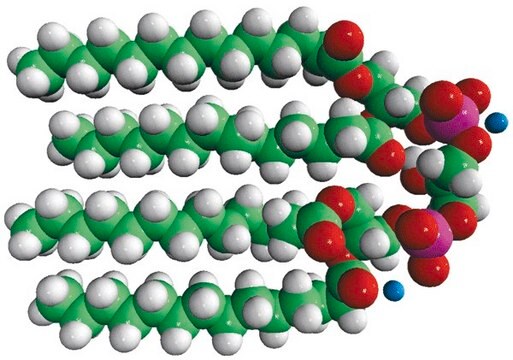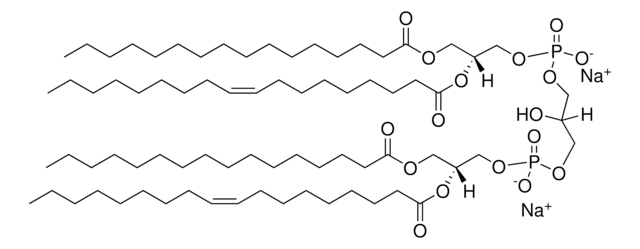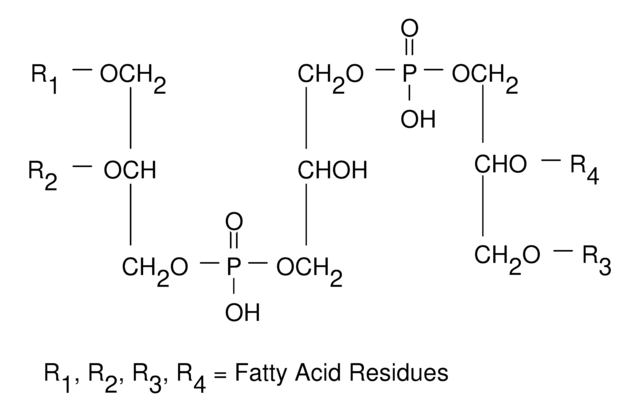710332C
Avanti
14:0 Cardiolipin (ammonium salt)
1′,3′-bis[1,2-dimyristoyl-sn-glycero-3-phospho]-glycerol (ammonium salt), chloroform
Synonym(s):
1,1′,2,2′-tetramyristoyl cardiolipin (ammonium salt); 1,1′,2,2′-tetratetradecanoyl cardiolipin (ammonium salt); CL(1′-[14:0/14:0],3′-[14:0/14:0])
About This Item
Recommended Products
Assay
>99% (TLC)
form
solution
packaging
pkg of 1 × 2.5 mL (710332C-25mg)
manufacturer/tradename
Avanti Research™ - A Croda Brand 710332C
concentration
10 mg/mL (710332C-25mg)
lipid type
phospholipids
cardiolipins
shipped in
dry ice
storage temp.
−20°C
General description
Application
- as a standard in tandem mass spectrometry
- in the preparation of membrane proximal region (MPR) of human immunodeficiency virus (HIV-1) glycoprotein 41 (gp41)-lipopeptide conjugate and liposomes
- as a component of micelle for suspending C8 ceramide substrate in ceramide kinase assay
Biochem/physiol Actions
Packaging
Legal Information
Signal Word
Danger
Hazard Statements
Precautionary Statements
Hazard Classifications
Acute Tox. 3 Inhalation - Acute Tox. 4 Oral - Aquatic Chronic 3 - Carc. 2 - Eye Irrit. 2 - Repr. 2 - Skin Irrit. 2 - STOT RE 1 - STOT SE 3
Target Organs
Central nervous system, Liver,Kidney
WGK
WGK 3
Regulatory Listings
Regulatory Listings are mainly provided for chemical products. Only limited information can be provided here for non-chemical products. No entry means none of the components are listed. It is the user’s obligation to ensure the safe and legal use of the product.
EU REACH Annex XVII (Restriction List)
Choose from one of the most recent versions:
Certificates of Analysis (COA)
It looks like we've run into a problem, but you can still download Certificates of Analysis from our Documents section.
If you need assistance, please contact Customer Support.
Already Own This Product?
Find documentation for the products that you have recently purchased in the Document Library.
Customers Also Viewed
Our team of scientists has experience in all areas of research including Life Science, Material Science, Chemical Synthesis, Chromatography, Analytical and many others.
Contact Technical Service

![14:0 Cardiolipin (sodium salt) 1′,3′-bis[1,2-dimyristoyl-sn-glycero-3-phospho]-glycerol (sodium salt), chloroform](/deepweb/assets/sigmaaldrich/product/images/390/523/992bed4e-3608-4209-aa6e-fa9206a4a31b/640/992bed4e-3608-4209-aa6e-fa9206a4a31b.jpg)









